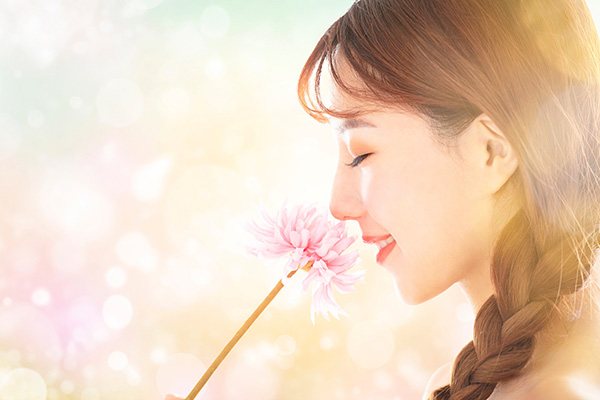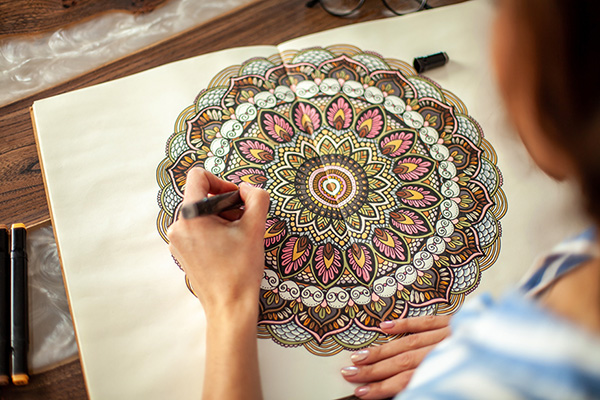inner peace
Reflections
 Sitting on the porch. Rocking. Yes, rocking in my willow rocking chair, surrounded by the smell of petrichor – that delightful odor the earth gifts us with when fresh rain is coming down after a long, dry spell. The aroma of the freshly hung chile ristras greets me in the Santa Fe, New Mexico tradition at this time of year, when the growing season is done and the picking of the season’s ripe offerings has begun. Richness abounds with the aromas of the petrichor and the strung pods of red chile blending in the softness of the evening breeze.
Sitting on the porch. Rocking. Yes, rocking in my willow rocking chair, surrounded by the smell of petrichor – that delightful odor the earth gifts us with when fresh rain is coming down after a long, dry spell. The aroma of the freshly hung chile ristras greets me in the Santa Fe, New Mexico tradition at this time of year, when the growing season is done and the picking of the season’s ripe offerings has begun. Richness abounds with the aromas of the petrichor and the strung pods of red chile blending in the softness of the evening breeze.
The automatic flood light and the blue laser lights have come on, as they do every day at dusk, to illuminate the waterfall in the garden, although it’s still a bit early for them to shine their brightest. Not quite dark enough yet, but soon it will be. I just fed my precious four-legged fur daughter her dinner. Now that my day is done and another week has gone by, I am contemplating whether or not I have done well this week.
Yes, I believe so! I have learned so much and have grasped many new concepts. I also renewed my awareness of some familiar concepts that were in need of repetition, so I could complete some hard earned lessons. And I found resolution to some newer viewpoints on old issues. Whew! I feel I’ve been turned wrong side out in just one week, only to realize it is the other way around. I was wrong-side-out before. Now I’m right-side-in, or more so at least.
I look up from my musings to see the lights. It is dark now and they’re shining brightly against the dark night sky. The lasers look like blue fireflies as they pinpoint their magical presence. The synchronicity feels deeply significant. At the end of another week, after much breaking down of old thought patterns, I see the flood light and laser lights reflecting the realization that I am different now than last week, or at any time before.
Are You Ready For The Unexpected?
 It has been quite the saga with the dishwasher in my apartment! It has not worked properly for over a year now. The maintenance crew here at the apartment complex has been able to keep it going, but it keeps flooding and breaking down. They have however grown somewhat weary with the ongoing dish drama, but I still manage to gain some sympathy for my struggles.
It has been quite the saga with the dishwasher in my apartment! It has not worked properly for over a year now. The maintenance crew here at the apartment complex has been able to keep it going, but it keeps flooding and breaking down. They have however grown somewhat weary with the ongoing dish drama, but I still manage to gain some sympathy for my struggles.
The last time they came by to repair the temperamental kitchen appliance, it took three weeks for them to show up after I put in the maintenance request. They took me by surprise, but I am not sure who was startled more – me or them. You see, I sometimes like to work in my pajamas, and therefore I was not at all prepared for their visit! Fortunately, I was able to retreat to my home office and merely close the door.
It got me thinking about our everyday readiness to embrace the unexpected in life. As spirit beings we signed up for human adventure riddled with many twists and turns, as well as some adversity and unforeseen surprises. The only way to safely and successfully navigate all these ups and downs is to be guided by the higher self with the support of spirit.
When we raise our vibration through spiritual practice and a conscious lifestyle, we build a foundational state of readiness that empowers us to calmly expect the unexpected, and to always be prepared for anything.
I think of it as ‘Father Readiness.’ In The Bible, Matthew 24 states that “no one knows the day or hour, not even the angels in heaven, nor the Son, but only the Father.”
Let Spirituality Be Your Guiding Light
 In a fast-paced world where superficial, materialistic pursuits tend to dominate our lives, the search for deeper meaning and purpose has become even more significant for many people. Spirituality has always been a guiding light in this quest.
In a fast-paced world where superficial, materialistic pursuits tend to dominate our lives, the search for deeper meaning and purpose has become even more significant for many people. Spirituality has always been a guiding light in this quest.
Spirituality offers solace, clarity, and a profound connection to something greater than ourselves. It is inherently personal and subjective, and not limited to religious affiliations, formal belief systems, or cultural traditions.
To be spiritual is to have a deep awareness of the higher self, as well as a heightened connection to God, Goddess, Source, Spirit, the Divine, the Universe.
Our preferred spiritual practice does not have to be some form of dogmatic religion, which tends to involve organized rituals, ceremony, and fixed doctrines. Instead, it can also be an individual exploration of higher consciousness that seeks a direct and personal experience of the sacred and divine.
Spiritual awareness is also not confined to merely a few isolated moments of contemplation, but instead a holistic, consistent state of mind, or way of being in the world, that permeates every aspect of our life.
By integrating spiritual principles and practices into our daily life, we infuse our everyday choices and actions with intention and authenticity, leading to a more balanced, fulfilling, and purposeful existence.
The Simple Secret To True Happiness
 It is easy to become too focused on the pursuit of happiness, to the detriment of true happiness. For many years, I was constantly setting goals for my ‘future happiness,’ only to eventually realize that I had been missing out on the joy available in the present moment.
It is easy to become too focused on the pursuit of happiness, to the detriment of true happiness. For many years, I was constantly setting goals for my ‘future happiness,’ only to eventually realize that I had been missing out on the joy available in the present moment.
I am certainly not alone in this, as I find many of my friends and clients tend to postpone joy and contentment, believing that they will finally be happy once they have achieved milestones, or acquired certain possessions.
Meanwhile, the key to living one’s best life is to fully embrace the present moment. This does not mean that we should stop dreaming of a better future or no longer pursue important personal goals. However, our future hopes and ambitions should not cause us to put our life on hold, nor prevent us from being fully immersed in the now.
If you are also someone with such an intense future-focus, I encourage you to begin living more in the present. You will soon discover a more fulfilling and joyful way of life.
Future-Focused Thinking
The first step is to let go of future-focused thinking. Many of us tend to constantly think about the future, worrying about what lies ahead or longing for future achievements. This mindset deprives us of the beauty and opportunities that exist in the present.
Your Divine Talent Is A Gift To The World
 Talent competitions on television are spiritually intriguing. Although I do not watch much reality TV, I do see video clips of talented performers on my social media newsfeeds from time to time. And I am often in awe of the deeper spiritual implications of their remarkable talent.
Talent competitions on television are spiritually intriguing. Although I do not watch much reality TV, I do see video clips of talented performers on my social media newsfeeds from time to time. And I am often in awe of the deeper spiritual implications of their remarkable talent.
I have noticed in recent years, for example, a prevalence of very gifted young artists who sing, dance and play instruments, some with no formal training, as if they have many years of experience. There are youngsters who look like the kid next door, but when they perform, they have the star quality of professional artists who have had years of training.
I believe these gifted youngsters were born with gifts they brought with them from past life incarnations. I further believe they are spiritual conduits who are instrumental in helping to raise the vibration on this planet.
One of my recent favorite clips is of 13-year-old Malakai Bayoh singing Andrew Lloyd Webber’s Pie Jesu on Britain’s Got Talent. He truly has the voice of an angel, and you can palpably feel the energy of the audience in absolute awe as they watch him perform. It is said he sings at the 963 Hz Solfeggio frequency, also known as the ‘frequency of divine harmony’ or the ‘sound of the crown chakra.’
According to meditation teacher Griff Williams, the Solfeggio Frequency Scale is an ancient musical scale comprising nine original sound healing frequencies ranging from 174 Hz to 963 Hz that are energetically powerful and spiritually uplifting.
Learning To Forgive
 Accepting, letting go and forgiving is difficult, but necessary to thrive and live our best life. When we do not forgive, we carry toxic energy within that poisons us mind, body and soul.
Accepting, letting go and forgiving is difficult, but necessary to thrive and live our best life. When we do not forgive, we carry toxic energy within that poisons us mind, body and soul.
Energetically non-forgiveness wreaks havoc in our chakras that can cause physical disease and mental illness. Our chakras store the energies of negative life events and experiences, if we do not release it, and heal those imbalances and blockages.
Forgiving does not mean we condone or exonerate the evil deeds of others, nor do we have to allow the people who have wronged us back into our life. This is seldom wise.
However, it is also not karmically smart to harbor resentment, seek vengeance, or wish others harm…for it will come back to us. Forgiveness is to surrender control and allowing karma to deal with those who wronged us.
When we forgive and release the trauma others have caused us, their choices and actions can no longer control us, nor steal our happiness, joy, and well-being. This is why forgiveness is the best gift we can give to ourselves.
Forgiveness does not set the wrongdoer free or exempt them from their karmic debt. Instead, we set ourselves free, so that their karmic choices no longer interfere with our energetic well-being and our divine right to manifest our best life. When we do not forgive and move on, it will continue to haunt us. It gradually infiltrates and contaminates every aspect of our life, and even causes us to attract more of the same unwanted experiences.
Using The Mandala In Your Spiritual Practice
 Years ago, I taught a class on sacred geometry. My favorite section of the class was related to using mandalas as a tool for the inward journey and I would like to share this practice with you.
Years ago, I taught a class on sacred geometry. My favorite section of the class was related to using mandalas as a tool for the inward journey and I would like to share this practice with you.
When using a mandala as a form of meditation you begin by creating a large circle. I have always found it easier to start with a graph based on concentric circles, but others start with just a circle and their imagination or intuition. Start at the outer edge of the circle to begin your session and work your way around the outer edge. Gradually work your way to the center of the mandala – this represents the inward journey.
We start by creating patterns and designs on the outside of the circle. This is the largest part of the circle and represents the universe. Understanding the expansiveness of the universe we can feel very small and insignificant, so it is important to move inward to find our grounding within the cosmos.
As we move inward in our mandala we contemplate our planet, then our country or large group of people we identify with the most. For many people this can be a religious tradition. We then move to contemplating our acquaintances, family, and friends.
Towards the center many mandala meditators will create four sides, or a square that leads to the center of his or her mandala. These four sides represent the four cardinal points, South, West, North, and East.